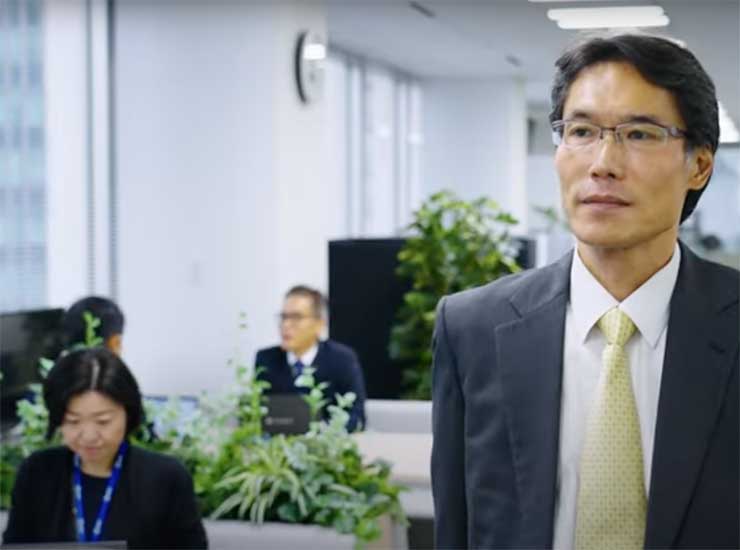-
Featured services
2026 Global AI Report: A Playbook for AI Leaders
Why AI strategy is your business strategy: The acceleration toward an AI-native state. Explore executive insights from AI leaders.
Access the playbook -
Services
View all services and productsLeverage our capabilities to accelerate your business transformation.
-
Services
Enterprise Networking
-
Services
Cloud
-
Services
Consulting
-
-
Services
Data and Analytics
-
Services
Infrastructure Solutions
-
Services
Global Data Centers
-
Services
CX and Digital Products
-
Services
Application Services
-
Services
Sustainability Services
-
Services
Digital Workplace
-
Services
Business Process Services
-
Services
Generative AI
-
Services
Cybersecurity
-
Services
Enterprise Application Platforms
![]()
Accelerate outcomes with agentic AI
Optimize workflows and get results with NTT DATA's Smart AI AgentTM Ecosystem
Create your roadmap -
-
-
Insights
Recent Insights
-
The Future of Networking in 2025 and Beyond
-
Using the cloud to cut costs needs the right approach
When organizations focus on transformation, a move to the cloud can deliver cost savings – but they often need expert advice to help them along their journey
-
Make zero trust security work for your organization
Make zero trust security work for your organization across hybrid work environments.
-
-
![]()
2026 Global AI Report: A Playbook for AI Leaders
Why AI strategy is your business strategy: The acceleration toward an AI-native state. Explore executive insights from AI leaders.
Access the playbook -
-
2026 Global AI Report: A Playbook for AI Leaders
Why AI strategy is your business strategy: The acceleration toward an AI-native state. Explore executive insights from AI leaders.
Access the playbook -
Discover how we accelerate your business transformation
-
About us
CLIENT STORIES
-
Liantis
Over time, Liantis – an established HR company in Belgium – had built up data islands and isolated solutions as part of their legacy system.
-
Randstad
We ensured that Randstad’s migration to Genesys Cloud CX had no impact on availability, ensuring an exceptional user experience for clients and talent.
-
-
CLIENT STORIES
-
Liantis
Over time, Liantis – an established HR company in Belgium – had built up data islands and isolated solutions as part of their legacy system.
-
Randstad
We ensured that Randstad’s migration to Genesys Cloud CX had no impact on availability, ensuring an exceptional user experience for clients and talent.
-
![]()
2026 Global AI Report: A Playbook for AI Leaders
Why AI strategy is your business strategy: The acceleration toward an AI-native state. Explore executive insights from AI leaders.
Access the playbook -
- Careers
Topics in this article
As the frequency of climate-related natural disasters worldwide continues to surge, the goal of achieving net-zero – the equilibrium between greenhouse gas emissions and their removal from the atmosphere – has gained new urgency.
Organizations play a key role in supporting this important strategy to combat the climate crisis and grapple with the challenges posed by global warming.
This is a pressing consideration both for an organization's sustained viability and for the well-being of our planet – and smart and digital infrastructure emerges as a key component of the solution.
Defining smart and digital infrastructure
Smart infrastructure involves integrating advanced technologies and digital solutions into physical infrastructure systems to enhance their performance, safety and sustainability.
This facilitates the collection and analysis of data for real-time decision-making, allowing systems to adapt to changing conditions while minimizing resource consumption.
Examples include intelligent transportation systems (such as advanced traffic management), smart utility management and smart buildings – structures with integrated energy management, lighting and climate control systems that can adjust automatically based on occupancy and environmental conditions.
Topics in this article
Watch our video on how we transformed our NTT DATA Singapore offices into a smart building
Digital infrastructure, on the other hand, refers to the foundational technology that enables the flow of data and supports various services and applications – in other words, the hardware, software and networks that make smart infrastructure possible.
For a global managed service provider like NTT DATA, with our wide-ranging expertise in digital infrastructure, there are opportunities to use innovative technologies to help clients transform digitally and meet their sustainability goals.
Importantly, this means applying technology to support business goals and with a commitment to circularity and minimising environmental impact.
- ALSO READ → Clean water is the lifeblood of smart cities
Embracing the circular economy in a digital world
Rethinking IT through the lens of the circular economy – an approach that aims to minimize waste and maximize the use of resources in a closed-loop system – is key to the adoption of smart technology. Digitalization must not create more problems or contribute to environmental challenges.
To effectively harness the power of smart technology, organizations need solutions that embrace circularity. This entails considering the entire lifecycle of technology, from procurement and deployment to end-of-life. Equipment should have a minimal carbon footprint and undergo responsible recycling or repurposing.
This approach is also referred to as “sustainable IT”, as it focuses on reducing the environmental impact of the technology itself.
“IT for sustainability”, on the other hand, involves using technology to enable better outcomes, particularly in the context of environmental and business challenges. It helps organizations predict and manage a range of environmental events – for example, when city authorities need to anticipate and minimize the effects of flash flooding.
Walking the talk
For NTT DATA, leading by example through various initiatives and projects is pivotal. Our sustainability targets include net-zero emissions across our operations by 2030 and across our value chain by 2040.
A noteworthy example is the ongoing implementation of smart-building capabilities, resulting in a 50% reduction in energy consumption in our offices in Cape Town, South Africa. And, when we decided to consolidate our various work premises in Singapore, we used our technology resources to design an intelligent workplace that would promote innovation and collaboration, making employees proud to return to the office.
Other projects include making the transition to renewable energy in our data centers and migrating our applications and data to more sustainable cloud environments.
Our sustainability ambitions and commitments create a powerful narrative: by sharing the challenges we face along the way and how we overcome them, we may inspire other organizations that are embarking on a similar journey towards sustainability.
We have made significant progress, but the realization of our sustainability ambitions, along with those of our partners and clients, hinges on collaboration and the exchange of ideas.
4 steps towards net-zero
If your organization wants to become more sustainable, where do you start?
- First, you need a clear road map. Our experts follow a structured approach that begins with understanding your organization’s current state and the technology you use. A materiality assessment can help determine the environmental, social and governance impact of your technology and prioritize the next steps.
- Next come decarbonization plans, including benchmarking your progress for tracking purposes. Address all aspects of your organization, including data centers, office spaces and employees’ commuting patterns. Here, intelligent workplace capabilities and the use of digital twins – virtual representations of your building systems that mirror their real-world counterparts in real time – come into play to provide visibility and manage your IT estate effectively.
- Your sustainability strategy should also combat data sprawl by assessing data usage and optimizing storage. Organizations produce growing volumes of data, of which up to 60% is unused – with knock-on effects for storage-related energy use.
- Finally, to help you influence and change behavior across your organization and make a positive impact in the communities you serve, we emphasize volunteering programmes and other forms of awareness and skills training.
Start today – there’s no time to waste
The transition to net-zero is not a choice – it’s a necessity. And, while the path to net-zero is challenging, it’s one that every organization must follow.
So, embrace the technology, embed circularity across your IT estate and make smart and digital infrastructure the driving force behind your transformation.
This article includes contributions by Ian Butcher, Senior Client Manager: New Business at NTT, and Stephen Kelly, Vice President: Sustainability, Europe, at NTT.
Read more about NTT DATA’s sustainability ambitions to see how we’re connecting our planet, economies and communities in innovative and sustainable ways.





